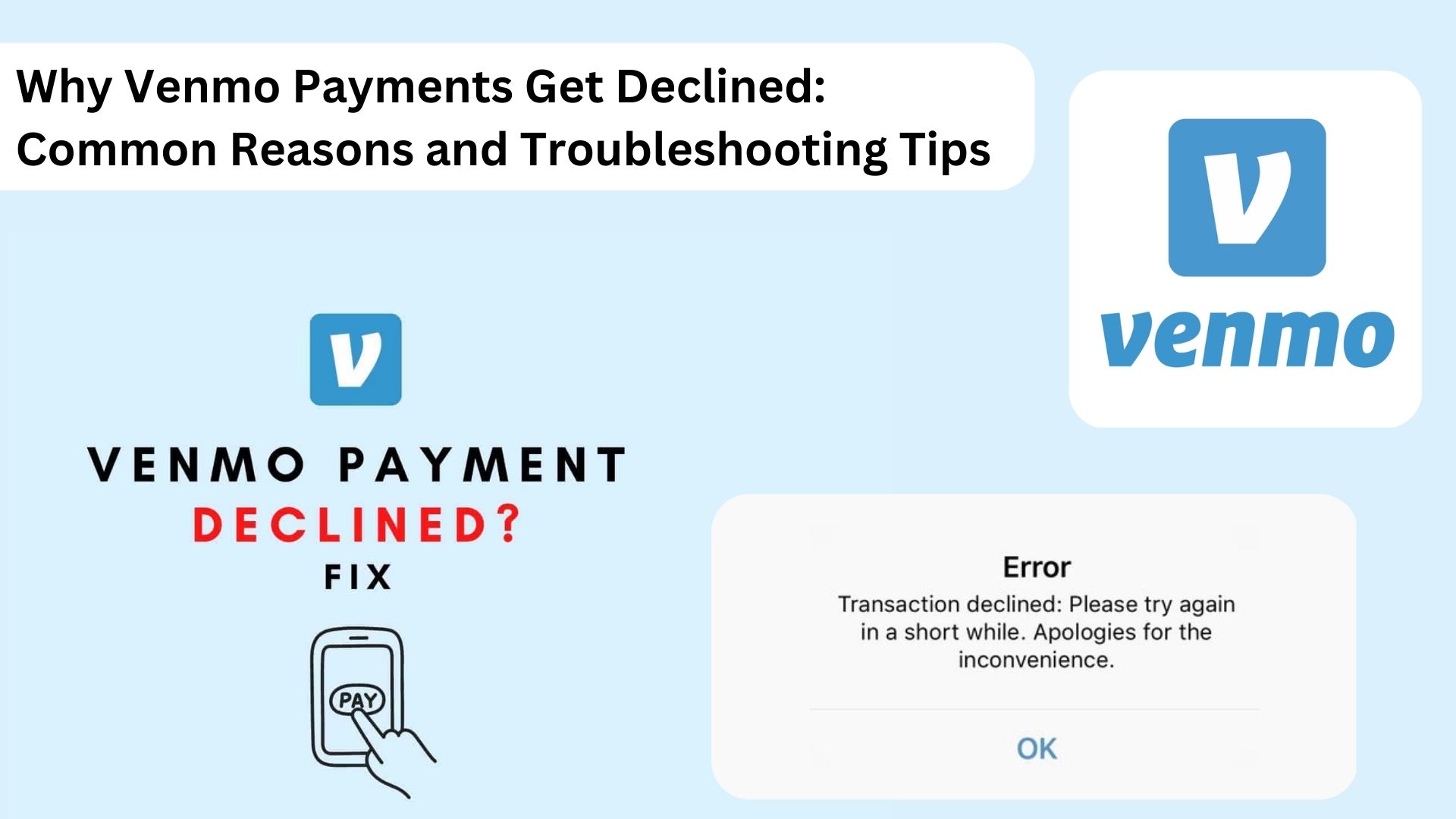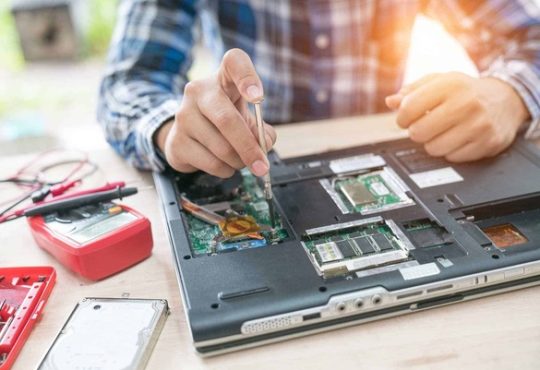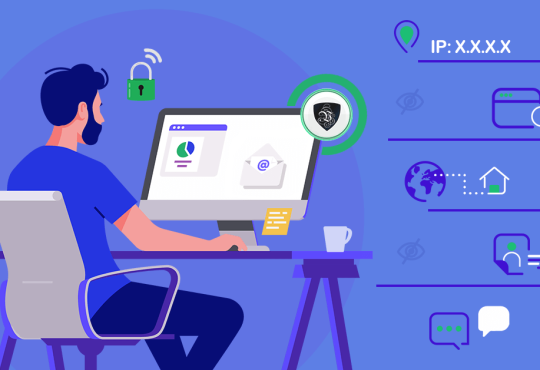
Sending payments through Venmo is a convenient and secure way to transfer money. But If you’ve ever found yourself wondering why Venmo payments get declined and what you can do about it, this article is for you. Herein, we outline the most common reasons why Venmo payments are declined and provide helpful tips on troubleshooting them—so you can rest assured that your money always ends up where it needs to go.
Table Of Content.
- Introduction
- Insufficient Funds
- Incorrect Payment Information
- Account Is Frozen or Restricted
- Suspicious or Fraudulent Activity
- Technical Issues
- Network Issues
- Troubleshooting Tips
1. Introduction
-
Introduction
Venmo is a mobile payment platform that makes it easy for users to send and receive money from friends and family. However, there are times when Venmo payments get declined, leaving users frustrated and unsure of what to do next. In this section, we will explore some of the common reasons why Venmo payments get declined and provide troubleshooting tips to help you resolve the issue.
-
Insufficient Funds
One of the most common reasons why Venmo payments get declined is due to a lack of funds in the user’s account or an issue with the linked payment method. According to Venmo’s website, when a payment is declined due to insufficient funds, the user will be responsible for any fees that may be incurred. Here are some troubleshooting tips for resolving this issue:
Make sure that your Venmo account has enough funds to cover the payment you are trying to make.
Check the status of the linked payment method to make sure that it is active and has sufficient funds.
If you are using a credit card for the payment, make sure that it is not currently over its limit.
-
Account Limitations
Sometimes, Venmo may limit a user’s account due to suspicious or fraudulent activity. In this case, the user will need to provide additional information to Venmo in order to lift the limitation. Here are some troubleshooting tips for resolving this issue:
Contact Venmo’s support team to find out why your account has been limited and what steps you need to take to lift the limitation.
Provide any necessary documentation or information requested by Venmo to satisfy their verification process.
Avoid making any additional payments until the account limitation has been fully resolved.
- Incorrect Payment Information
Incorrect payment information is another common reason why Venmo payments get declined. Here are some troubleshooting tips for resolving this issue:
Double-check the payment information to make sure that the recipient’s username or phone number is correct.
If you are trying to make a payment to a new recipient, make sure that you have added them as a friend on Venmo first.
Verify the recipient’s account information to make sure that they have not accidentally entered incorrect information on their end.
-
Security Issues
Venmo takes security very seriously and may decline payments if they detect any suspicious activity on a user’s account. Here are some troubleshooting tips for resolving this issue:
Change your Venmo password and enable two-factor authentication to enhance your account’s security.
2. Insufficient Funds
Section: Insufficient Funds
One common reason for Venmo payments being declined is insufficient funds. If a user doesn’t have enough money in their account to cover the transaction, the Venmo transaction failed.
Why are there insufficient funds in my Venmo account?
There are several reasons why Venmo users may not have enough funds in their accounts to cover a payment. For example, they may have recently made another large transaction, resulting in a temporary decrease in their balance. Additionally, if a user has several automatic payments or subscriptions set up, they may forget to account for those payments when making a transaction.
Troubleshooting Tips for Insufficient Funds
Check your Venmo balance before making a payment to ensure you have enough funds
Consider any upcoming automatic payments or subscriptions that may impact your balance
Transfer funds from a linked bank account to increase your Venmo balance
Make sure all recent transactions have been fully processed and aren’t still pending
Quote: “To avoid insufficient funds issues with Venmo, it’s always a good idea to keep an eye on your Venmo balance and any upcoming payments scheduled. Transferring funds from your linked bank account to your Venmo account is also an option if you need to add money quickly.” Venmo Support
💡 Key Takeaway: Venmo payments may be declined due to insufficient funds. Users can avoid this issue by monitoring their balance, accounting for upcoming payments, and transferring funds from a linked bank account.
3. Incorrect Payment Information
Section:
- Incorrect Payment Information
One of the most common reasons why Venmo payments get declined is incorrect payment information. Here are some possible errors to check and fix:
Insufficient Funds: Users must have enough money in their Venmo account or connected bank accounts to complete the transaction. If there are not enough funds, Venmo will decline the payment. Users should check their current balance and make sure the source of funds is valid.
Wrong Payment Method: When users link their bank accounts or cards to Venmo, they have to choose the correct payment method to avoid declined payments. Users must also make sure that the payment method is still valid and not expired.
Typo in Payment Information: Simple typos like incorrect routing numbers, bank account numbers, or email addresses can cause payment rejections. Users should double-check their payment information and correct any mistakes.
If none of the above solutions works, users can contact the fixed failed Venmo payment support to troubleshoot the issue. Here’s what Venmo recommends to fix incorrect payment information:
“First, confirm that the information you entered is correct by checking with your bank or card provider. If you find an error, correct it and attempt to transfer funds again. If everything appears correct, contact Venmo customer support for additional assistance.”
💡 Key Takeaway: Double-check payment information, including available funds, payment method, and personal data. Correct any errors and contact Venmo support if necessary.
4. Account Is Frozen or Restricted
-
Account Is Frozen or Restricted
Sometimes, Venmo may freeze or restrict an account for various reasons. The platform takes measures to protect users from fraudulent or suspicious behavior, and in some cases, this could mean locking an account. If your account is frozen or restricted, the first step is to confirm the reason why. Venmo will usually send an email explaining the situation, but if you’re unsure, you should contact customer support.
When your Venmo account is frozen, you will not be able to make or receive payments until the issue has been resolved. In some cases, you may need to provide additional information or documentation to verify your identity or the transaction in question. Venmo may also ask you to confirm certain details, such as your phone number, email address, or transaction history.
If your account is restricted, it means that there are certain limitations on how you can use the platform. This could include a lower transaction limit or being unable to make payments to certain users. Like a frozen account, you will need to provide additional information or documentation to lift the restriction.
It is essential to keep your account information up-to-date and accurate because Venmo uses this information to verify your identity and protect your payments from fraudulent activity.
Here are some common reasons why Venmo may freeze or restrict an account:
Suspicious activity, such as a high volume of transactions or sending money to an unknown user
Failure to comply with Venmo’s policies
Reports of fraud, unauthorized transactions, or disputes from other users
If your account has been frozen or restricted, make sure to take the necessary steps to rectify the situation as soon as possible. Reach out to customer support, provide the requested information, and follow the guidelines provided to get your account back to normal.
💡 Key Takeaway: If your Venmo account is frozen or restricted, you will need to provide additional information or documentation to verify your identity, and the transaction in question, or lift the restriction. Contact customer support, provide the necessary information, and follow the guidelines to rectify the situation as soon as possible.
5. Suspicious or Fraudulent Activity
- Suspicious or Fraudulent Activity
When you use Venmo for transactions, it is important to ensure that your account and activities are not associated with any suspicious or fraudulent behavior. Venmo is known to closely monitor accounts for any signs of suspicious activities, and if they detect any such activities, your payments may get declined. Here are some reasons why Venmo may flag your activities as suspicious or fraudulent:
- Unusual Transaction Activity
- High-value Transactions
- Payment to Suspicious Accounts
- Sharing Accounts with Others
- Unusual Transaction Activity
- Unusual Transaction Activity
If you suddenly start making transactions that are inconsistent with your past activities, Venmo may consider that as unusual transaction activity. For instance, if you typically make small payments to friends and family, but suddenly start making several large payments to strangers, Venmo may view that as suspicious behavior, and your payments may not go through.
- Sharing Accounts with Others
If you share your Venmo account with others or use it on multiple devices, this raises a red flag to Venmo. It is recommended that you do not share your Venmo account with anyone as it increases the risk of fraudulent activities on your account.
Quotes:
According to Venmo’s User Agreement, “You may not use the Venmo services for activities that relate to transactions that support pyramid, Ponzi, or other similar schemes.”
💡 Key Takeaway: Venmo closely monitors accounts for any signs of suspicious or fraudulent activities. If you suddenly start making transactions that are inconsistent with your past activities, if you make a transaction above a certain value or to a suspicious account, or if you share your account with others, Venmo may decline your payments.
6. Technical Issues
Venmo is an excellent tool to send and receive money from friends, family, and businesses. However, sometimes things may not go as expected, and you may experience issues with payments. One common reason for declined payments is technical problems, which can occur at any stage of the Venmo transaction process. In this section, we will explore the common technical issues that cause Venmo payments to get declined and provide troubleshooting tips to help you overcome them.
-
Poor Internet Connection
Having a stable internet connection is crucial when using Venmo. Poor internet connectivity can cause delays in processing transactions, leading to declined payments. If you face this issue, try connecting to a better network or resetting your device’s settings. You can also try closing and reopening the app or clearing the cache to resolve the connectivity issue.
-
Outdated App Version
Using an outdated version of the Venmo app can cause technical problems, leading to declined payments. If your app is outdated, it may not be compatible with the latest operating system, leading to complications. To resolve this issue, update your Venmo app to the latest version available in the app store.
-
Payment Limit Exceeded
Venmo sets limits on the amount of money you can transfer in a day, week, or month. If you exceed these limits, your Venmo transaction failed may get declined. To avoid this problem, try to reduce the amount of money you are transferring or wait until the next day or week to complete the transaction.
-
Incorrect Payment Details
Providing incorrect payment details such as wrong billing address, security code, or incorrect card number can cause declined payments. To resolve this problem, make sure you have entered the correct payment details before sending the transaction.
-
Blocked Account
If Venmo has flagged your account due to a security concern, your payments may get declined. In this scenario, you can contact Venmo support to rectify the issue and unblock your account.
💡 Key Takeaway: Technical issues such as poor internet connection, outdated app version, exceeded payment limits, incorrect payment details, and blocked accounts can cause Venmo payments to get declined. Troubleshooting such issues can help resolve the problem and allow you to complete the Venmo transaction successfully.
7. Network Issues
- Network Issues
A common reason for Venmo payments to get declined is network issues. This problem arises when the network connection between the user’s device and Venmo’s server becomes unstable or disrupted. A poor network connection can cause payment failures, timeouts, and errors.
To troubleshoot network issues, one can try the following tips:
Move closer to the Wi-Fi router or cellular signal if using mobile data, as this could improve the connection.
Turn off cellular data and use Wi-Fi, or vice versa, as this could also improve the connection.
Restart the device and try again, as it could help reset network connections and fix any temporary glitches.
Check if other apps on the device are experiencing network issues, as this could indicate a larger network problem that is beyond the user’s control.
According to Venmo’s website, “If you continue to have trouble paying or linking a bank account, please give it a couple of days and try again there may be a temporary issue with the Venmo service or your bank’s connection to Venmo. If the issue persists, please contact Venmo support.”
💡 Key Takeaway: Network issues are a common reason for Venmo payments to get declined, and they can often be resolved by improving the network connection, restarting the device, or contacting Venmo support.
8. Troubleshooting Tips
Section: 8. Troubleshooting Tips
If your Venmo payment has been declined, don’t panic. This section outlines common reasons why Venmo payments get declined and offers troubleshooting tips to help resolve the issue.
- Insufficient Funds:
One of the most common reasons for a declined Venmo payment is insufficient funds in your account. Before making a payment, make sure you have enough funds in your Venmo balance or linked bank account.
- Card Not Accepted:
Venmo may not accept certain cards. Check that your card is accepted by Venmo before attempting a payment.
- Account Frozen or Blocked:
Conclusion
In conclusion, getting declined payments on Venmo can be frustrating, but there are common reasons and troubleshooting tips to consider. Whether it’s insufficient funds, incorrect information, or security concerns, there are solutions to each problem. We hope this article has helped you identify the various reasons behind declined payments, and how to resolve them. Keep these tips in mind and have a smooth Venmo experience. And remember, always double-check your information before sending a payment! Start making secure and hassle-free fix failed Venmo payments!




